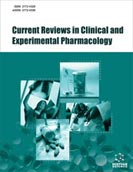Abstract
Inflammatory bowel disease (IBD), represented by Crohn’s disease (CD) and ulcerative colitis (UC), is a chronic inflammatory disorder of the gastrointestinal tract (GIT) characterized by chronic relapsing intestinal inflammation, abdominal pain, cramping, loss of appetite, fatigue, diarrhoea, and weight loss. Although the etiology of IBD remains unclear, it is believed to be an interaction between genes, and environmental factors, such as an imbalance of the intestinal microbiota, changing food habits, an ultra-hygiene environment, and an inappropriate immune system. The development of novel effective therapies is stymied by a lack of understanding of the aetiology of IBD. The current therapy involves the use of aminosalicylates, immunosuppressants, and corticosteroids that can effectively manage symptoms, induce and sustain remission, prevent complications, modify the course of the disease, provide diverse treatment options, showcase advancements in biologic therapies, and enhance the overall quality of life. However, the efficacy of current therapy is overshadowed by a plethora of adverse effects, such as loss of weight, mood swings, skin issues, loss of bone density, higher vulnerability to infections, and elevated blood pressure. Biologicals, like anti-tumour necrosis factor agents, can stimulate an autoimmune response in certain individuals that may diminish the effectiveness of the medication over time, necessitating a switch to alternative treatments. The response of IBD patients to current drug therapy is quite varied, which can lead to disease flares that underlines the urgent need to explore alternative treatment option to address the unmet need of developing new treatment strategies for IBD with high efficacy and fewer adverse effects. Drug repurposing is a novel strategy where existing drugs that have already been validated safe in patients for the management of certain diseases are redeployed to treat other, unindicated diseases. The present narrative review focuses on potential drug candidates that could be repurposed for the management of IBD using on-target and off-target strategies. It covers their preclinical, clinical assessment, mechanism of action, and safety profiles, and forecasts their appropriateness in the management of IBD. The review presents useful insights into the most promising candidates for repurposing, like anti-inflammatory and anti-apoptotic troxerutin, which has been found to improve the DSS-induced colitis in rats, an antiosteoarthritic drug diacetylrhein that has been found to have remarkable ameliorating effects on DSS-induced colitis via anti-oxidant and anti- inflammatory properties and by influencing both apoptosis and pyroptosis. Topiramate, an antiepileptic and anticonvulsant drug, has remarkably decreased overall pathophysiological and histopathological events in the experimental model of IBD in rodents by its cytokine inhibitory action.
Keywords: Drug repositioning, drug reprofiling, drug redirecting, drug rediscovery, colonic inflammation, large intestine, IBD, CD, UC.
[http://dx.doi.org/10.3389/fmed.2021.765474] [PMID: 34988090]
[http://dx.doi.org/10.1016/j.mayocp.2018.09.013] [PMID: 30611442]
[http://dx.doi.org/10.1016/S0140-6736(07)60750-8] [PMID: 17499605]
[http://dx.doi.org/10.25122/jml-2018-0075]
[http://dx.doi.org/10.1016/j.cgh.2006.03.003] [PMID: 16630762]
[http://dx.doi.org/10.1053/j.gastro.2011.10.001] [PMID: 22001864]
[http://dx.doi.org/10.1038/nrgastro.2015.150] [PMID: 26323879]
[http://dx.doi.org/10.1007/s11938-018-0175-1] [PMID: 29411220]
[http://dx.doi.org/10.1016/j.pcl.2011.06.007] [PMID: 21855713]
[http://dx.doi.org/10.1177/1756284819853208] [PMID: 31205488]
[http://dx.doi.org/10.1016/j.crohns.2014.05.008] [PMID: 24974207]
[http://dx.doi.org/10.1038/nature11582] [PMID: 23128233]
[http://dx.doi.org/10.3748/wjg.v20.i1.91] [PMID: 24415861]
[http://dx.doi.org/10.1038/nrgastro.2015.186] [PMID: 26627550]
[http://dx.doi.org/10.1016/j.it.2010.12.007] [PMID: 21251876]
[http://dx.doi.org/10.1038/ni.1722] [PMID: 19349988]
[http://dx.doi.org/10.1038/ng1954] [PMID: 17200669]
[http://dx.doi.org/10.1038/ng2061] [PMID: 17554261]
[http://dx.doi.org/10.1038/nature09782] [PMID: 21248839]
[http://dx.doi.org/10.1186/s13148-021-01089-3] [PMID: 33980294]
[http://dx.doi.org/10.1007/s12328-017-0813-5] [PMID: 29285689]
[http://dx.doi.org/10.1073/pnas.0706625104] [PMID: 17699621]
[http://dx.doi.org/10.1016/j.chom.2008.05.001] [PMID: 18541218]
[http://dx.doi.org/10.1053/j.gastro.2013.07.050] [PMID: 23912083]
[http://dx.doi.org/10.1038/ajg.2011.44] [PMID: 21468064]
[http://dx.doi.org/10.1136/gutjnl-2013-305304] [PMID: 23828881]
[http://dx.doi.org/10.3109/00365521.2014.966753] [PMID: 25314574]
[http://dx.doi.org/10.1146/annurev.physiol.010908.163145] [PMID: 18808327]
[http://dx.doi.org/10.1053/j.gastro.2006.04.020] [PMID: 16831596]
[http://dx.doi.org/10.1136/gut.2009.206466] [PMID: 21252204]
[http://dx.doi.org/10.1155/2017/4535194]
[http://dx.doi.org/10.1097/MIB.0b013e318281f54e] [PMID: 23598816]
[http://dx.doi.org/10.1038/s41422-020-0332-7] [PMID: 32433595]
[http://dx.doi.org/10.1016/j.molmed.2009.03.002] [PMID: 19362058]
[http://dx.doi.org/10.1136/gut.52.1.65] [PMID: 12477762]
[http://dx.doi.org/10.1016/j.it.2013.08.002] [PMID: 24035478]
[PMID: 10662999]
[http://dx.doi.org/10.1097/MOG.0b013e328311f26e] [PMID: 19125486]
[http://dx.doi.org/10.1016/j.addr.2007.07.003] [PMID: 17825455]
[http://dx.doi.org/10.3748/wjg.14.4280]
[http://dx.doi.org/10.3390/nano10122460] [PMID: 33316984]
[http://dx.doi.org/10.1016/S0140-6736(12)60150-0] [PMID: 22914296]
[http://dx.doi.org/10.1097/DCR.0000000000000030] [PMID: 24316941]
[http://dx.doi.org/10.1111/j.1572-0241.2000.03360.x] [PMID: 11151876]
[http://dx.doi.org/10.1084/jem.20041948] [PMID: 15824083]
[http://dx.doi.org/10.1177/1756283X11405250] [PMID: 21765868]
[http://dx.doi.org/10.1002/ibd.20099] [PMID: 17243140]
[http://dx.doi.org/10.1016/j.jcol.2015.08.006]
[http://dx.doi.org/10.1136/gut.2010.224154] [PMID: 21464096]
[http://dx.doi.org/10.1517/14740338.2016.1140743] [PMID: 26789102]
[http://dx.doi.org/10.1046/j.1365-2036.1996.22164025.x] [PMID: 8899106]
[http://dx.doi.org/10.1016/j.rdc.2015.08.002] [PMID: 26611548]
[http://dx.doi.org/10.1007/s11916-012-0273-z] [PMID: 22644902]
[http://dx.doi.org/10.1038/ajg.2009.410] [PMID: 19623172]
[http://dx.doi.org/10.5217/ir.2020.00155] [PMID: 33845546]
[http://dx.doi.org/10.1515/jbcpp-2016-0014] [PMID: 30089097]
[http://dx.doi.org/10.1177/1756283X09354136] [PMID: 21180588]
[http://dx.doi.org/10.1007/s00535-010-0352-z] [PMID: 21132334]
[http://dx.doi.org/10.1002/ibd.21318] [PMID: 20848491]
[http://dx.doi.org/10.1093/jpe/rtab100]
[PMID: 24899819]
[http://dx.doi.org/10.3389/fmed.2021.765474] [PMID: 34988090]
[http://dx.doi.org/10.2165/11632710-000000000-00000] [PMID: 22512365]
[http://dx.doi.org/10.3748/wjg.v29.i14.2078] [PMID: 37122604]
[http://dx.doi.org/10.1016/j.drudis.2015.05.001] [PMID: 25975957]
[http://dx.doi.org/10.1016/B978-0-12-386009-5.00004-7]
[http://dx.doi.org/10.1021/acs.jafc.0c06755] [PMID: 33621077]
[http://dx.doi.org/10.3389/fimmu.2018.02119] [PMID: 30319608]
[http://dx.doi.org/10.1016/j.bcp.2015.06.030] [PMID: 26212544]
[http://dx.doi.org/10.1034/j.1600-0773.2002.910104.x] [PMID: 12193257]
[http://dx.doi.org/10.1016/j.biopha.2020.110594] [PMID: 32858499]
[http://dx.doi.org/10.1016/j.biopha.2022.113651] [PMID: 36081290]
[http://dx.doi.org/10.1186/1756-9966-30-87] [PMID: 21943236]
[http://dx.doi.org/10.2174/1574885517666220328142715]
[http://dx.doi.org/10.1016/j.pharmthera.2020.107710] [PMID: 33091427]
[http://dx.doi.org/10.1007/s40265-017-0854-6] [PMID: 29236231]
[http://dx.doi.org/10.1093/brain/awq386] [PMID: 21354971]
[http://dx.doi.org/10.3389/fneur.2018.00005] [PMID: 29410647]
[http://dx.doi.org/10.1016/j.medidd.2022.100142]
[http://dx.doi.org/10.3390/ph13050095] [PMID: 32414180]
[http://dx.doi.org/10.1111/cas.14538] [PMID: 32573072]
[http://dx.doi.org/10.1111/j.1365-4632.2004.02445.x] [PMID: 15663665]
[http://dx.doi.org/10.1002/bdrc.21096] [PMID: 26043938]
[http://dx.doi.org/10.2183/pjab.96.016] [PMID: 32522938]
[http://dx.doi.org/10.1007/s40265-017-0689-1] [PMID: 28205024]
[http://dx.doi.org/10.1124/dmd.108.024679] [PMID: 18948377]
[http://dx.doi.org/10.3748/wjg.v13.i15.2166] [PMID: 17465495]
[http://dx.doi.org/10.1053/j.gastro.2014.01.015] [PMID: 24417819]
[http://dx.doi.org/10.1172/JCI71471] [PMID: 24292712]
[http://dx.doi.org/10.1016/j.jcmgh.2018.12.001] [PMID: 30553809]
[http://dx.doi.org/10.3389/fimmu.2017.01066] [PMID: 28936210]
[http://dx.doi.org/10.1002/(SICI)1521-1878(199911)21:11<932:AID-BIES5>3.0.CO;2-N] [PMID: 10517866]
[http://dx.doi.org/10.1053/j.gastro.2019.11.019]
[http://dx.doi.org/10.1136/ard.59.11.841] [PMID: 11053058]
[http://dx.doi.org/10.3389/fphar.2021.651415]
[http://dx.doi.org/10.3748/wjg.v16.i44.5523] [PMID: 21105185]
[PMID: 14684351]
[http://dx.doi.org/10.1093/ecco-jcc/jjx075] [PMID: 28575164]
[http://dx.doi.org/10.3748/wjg.v24.i33.3681] [PMID: 30197475]
[http://dx.doi.org/10.3390/ijms23169127] [PMID: 36012393]
[http://dx.doi.org/10.1002/med.21837] [PMID: 34148245]
[http://dx.doi.org/10.3892/mmr.2019.10345] [PMID: 31173225]
[http://dx.doi.org/10.1038/aps.2017.185]
[http://dx.doi.org/10.1177/1535370218769420] [PMID: 29763384]
[http://dx.doi.org/10.1007/s11033-014-3707-3] [PMID: 25195052]
[http://dx.doi.org/10.1186/1478-811X-9-13] [PMID: 21569639]
[http://dx.doi.org/10.1002/hep.23035] [PMID: 19575458]
[http://dx.doi.org/10.1093/jamia/ocab165] [PMID: 34529084]
[http://dx.doi.org/10.1007/s12664-013-0420-4] [PMID: 24222372]
[http://dx.doi.org/10.1371/journal.pone.0005263] [PMID: 19421322]
[http://dx.doi.org/10.1097/00005176-200203000-00005] [PMID: 11964947]
[http://dx.doi.org/10.1016/S0140-6736(04)16449-0] [PMID: 15207950]
[http://dx.doi.org/10.1016/S1773-2247(11)50085-1]
[http://dx.doi.org/10.1038/s41598-018-24050-6] [PMID: 29618773]






























